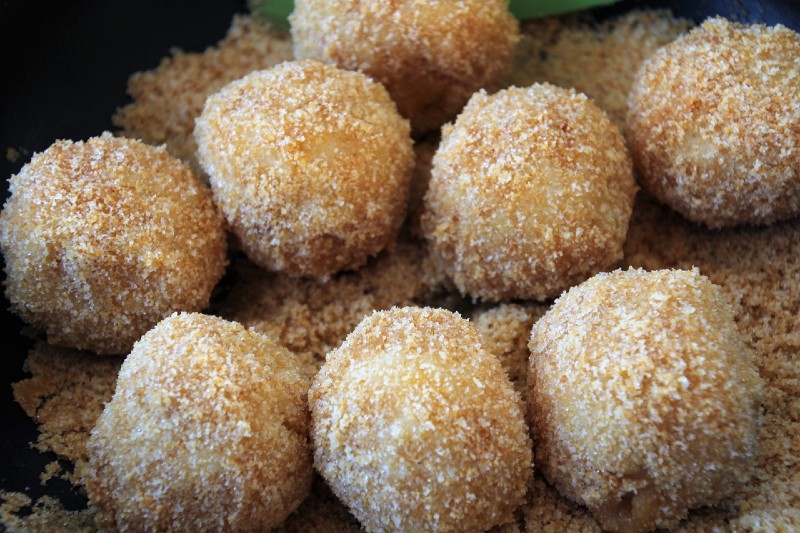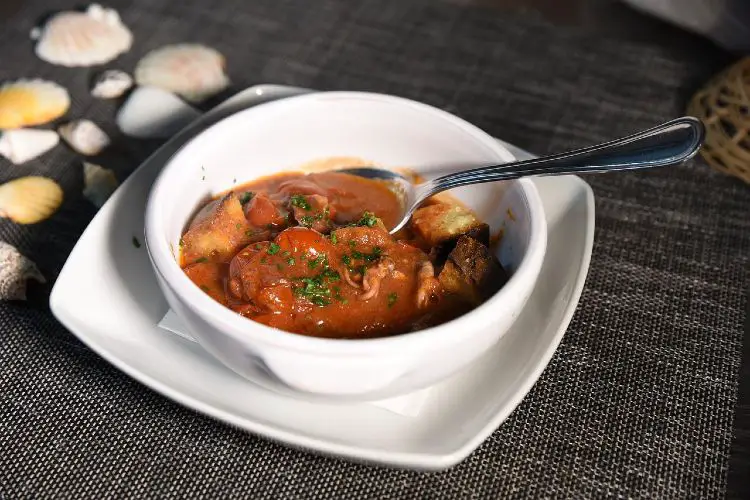What Do Sugar Plums Taste Like?
Quick Answer
The taste of a sugar plum can vary depending on what core is used (almond, caraway, cardamom, etc.) and what flavorings are added. Traditional sugar plums often have a sweet and slightly spicy flavor, often flavored with anise, fennel, caraway, or cardamom. In other adaptations, they might taste more like familiar fruit candies or chocolate bonbons.
What Are Sugar Plums?
The term “sugar plum” can be a bit misleading, as many people might assume it involves a plum fruit coated in sugar. However, traditionally, a sugar plum is not a plum at all. In the most traditional sense, a sugar plum is a comfit-a seed, nut, or spice coated with sugar.
The process for making them involves layering sugar syrup over the central core and allowing it to harden, a technique similar to creating a hard candy.
Over the centuries, the term has expanded to include a variety of sugar-based treats, including chocolates and other confections that may be fruit-flavored or filled with fruit preserves, but they generally do not contain any actual plum.
The term is especially associated with Christmas, largely due to its inclusion in holiday tales and songs like “The Nutcracker” and “The Night Before Christmas.”
What Do Sugar Plums Taste Like?
Traditional Sugar Plums: Sweet and Slightly Spicy
Traditional sugar plums have a unique flavor that sets them apart from other sweets. At their core, they are a type of comfit, which means they often begin with a seed, nut, or spice that has been coated with layers of sugar syrup. This results in a hard, sugar-candy shell encapsulating the core.
The most traditional versions are flavored with spices like anise, fennel, or cardamom. These spices give the sugar plum its slightly spicy undertone, which is harmoniously balanced by the sweetness of the sugar coating.
The taste experience starts off sweet, then evolves into a more complex, slightly spicy note, leaving a unique aftertaste that lingers pleasantly.
Modern Sugar Plums: Fruity, Nutty, and More Complex
Modern sugar plums are different from traditional ones. They often have dried fruits, nuts, and spices. Dried plums, figs, and apricots make them fruity. Almonds or walnuts add crunch and a nutty taste.
They also have sweeteners like honey or maple syrup. Some even have spices like cinnamon and ginger. Some may include a bit of brandy. This makes the flavor more complex. You can taste fruity, nutty, and spicy notes all at once. The sweetness from sugar or honey ties it all together.
Variations Depending on Regional or Family Recipes
The beauty of sugar plums lies in their versatility. While there are common themes in their flavor profile, regional and family recipes can bring a whole new twist to the classic treat.
For instance, some Eastern European versions might incorporate poppy seeds and citrus flavors, while a Middle Eastern interpretation could include ingredients like pistachios and rose water.
In American households, you might even find a peppermint-flavored sugar plum around the holiday season, inspired by the popular candy cane. Such variations make sugar plums a fascinating subject for culinary exploration, as the taste can vary widely depending on who is making them and where they are from.
Tasting Notes
First Impressions: Texture and Aroma
Before you even take the first bite, the aroma of a sugar plum can give you a hint of the flavor journey to come. Traditional ones smell a bit spicy from spices like anise or cardamom. Modern ones may smell like fruit and nuts.
The texture is different too. Traditional sugar plums are hard and crunchy because of sugar. Modern ones can be chewy or soft. This is because they have dried fruits and nuts.
The initial bite into a traditional sugar plum provides a crisp snap. While a modern sugar plum may offer a more tender mouthfeel.
Flavor Journey: How the Taste Evolves from Initial Bite to Aftertaste
The flavor of a sugar plum is not static; it evolves as you chew. A traditional sugar plum starts off with an overt sweetness that gives way to a subtle spiciness. The sugar melts away quickly, leaving behind the flavors of the core spice, seed, or nut, which can linger as a pleasant aftertaste.
Modern sugar plums present a more layered flavor experience. The initial sweetness of the honey or sugar quickly blends into the fruity flavors of dried apricots, figs, or plums.
As you continue to chew, the nutty and spicy undertones become more prominent, creating a well-rounded, complex flavor profile that ends with a lasting aftertaste of fruit and spice.
Comparison with Other Similar Confections
When compared to other sweets, sugar plums have their own unique place. Traditional sugar plums can be likened to hard candies with a spiced kick, akin to a spiced gumdrop but with a more natural, nuanced flavor.
Modern sugar plums, on the other hand, might be compared to fruit and nut bars or even gourmet chocolate truffles filled with fruit preserves, yet they are often less sweet and feature a wider array of spices.
While marzipan might share some textural similarities with softer, modern sugar plums, it lacks the fruitiness and complex spice blend that characterizes these treats.
FAQs
Does A Sugar Plum Actually Taste Like Plum?
Traditional sugar plums typically do not taste like plum. They are often flavored with spices like anise, fennel, or cardamom. Modern versions may include dried plum or other fruits, giving a fruity flavor.
Is A Sugar Plum Sweet Or Spicy?
Traditional sugar plums are sweet with a slight spiciness from added spices. Modern versions are generally sweeter and may include a wider range of flavors like fruity, nutty, and spicy notes.
What’s The Texture Of Sugar Plum?
Traditional sugar plums are hard and crunchy due to their sugar coating. Modern versions can be softer and chewier because of the dried fruits and nuts used.
How Do Modern And Traditional Sugar Plums Differ In Taste?
Traditional sugar plums are generally sweet and slightly spicy. Modern versions offer a more complex flavor profile, incorporating fruity, nutty, and spicy elements.
Are There Regional Variations In The Taste Of Sugar Plums?
Yes, regional and family recipes can significantly influence the taste, introducing ingredients like poppy seeds, citrus flavors, pistachios, or rose water.
What Spices Are Commonly Used To Flavor Traditional Sugar Plums?
Spices like anise, fennel, cardamom, and sometimes cinnamon are commonly used in traditional sugar plums.
Do Sugar Plums Have An Aftertaste?
Traditional sugar plums often leave a mild spicy aftertaste, while modern versions may leave a complex, lingering flavor of fruits and spices.
How Do Sugar Plums Compare To Other Similar Confections?
Traditional sugar plums are similar to hard candies but offer a more nuanced, spiced flavor. Modern versions may resemble fruit and nut bars or even chocolate truffles in texture and complexity but are usually less sweet.
Is It Hard To Make Sugar Plums At Home?
Making traditional sugar plums can be time-consuming due to the layering process, while modern versions are generally easier to make, requiring basic mixing and shaping.


